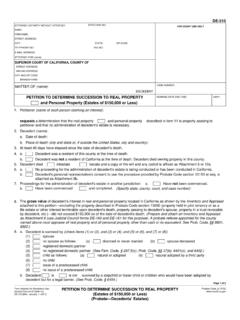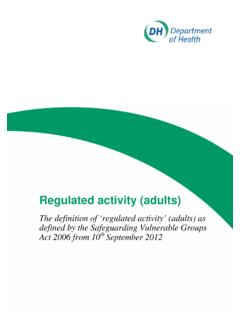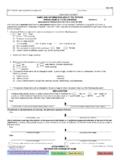Transcription of Strategies to Build Relationships with Students
1 Strategies to Build Relationships with Students OBJECTIVE: Educators will be able to use communication and interaction Strategies that support relationship building with Students . PURPOSE: When educators intentionally use positive language and Strategies for relationship building, Students have a variety of opportunities to develop trusting Relationships with adults. This educational practice toolkit ( ) is part of Module 3: Adult-Student Interactions Relationships buffer the negative impacts of chronic stress. Knowing how positive Relationships can buffer the impact of chronic stress empowers educators to prioritize relationship building in their daily interactions. SCIENCE SIGNALS Turnaround for Children Toolbox Strategies to Build Relationships with Students (Educational Practice Toolkit ) Notice: Turnaround for Children ( Turnaround ) retains ownership of, and all right, title and interest in and to, Intellectual Property (as hereinafter defined) contained in its resources/publications other than those for which the copyright is held by other authors as acknowledged and credited therein; and no license whether express or implied, is granted by use of any and all materials in these resources/publications.
2 All lectures, appearances, and visual presentations made by Turnaround staff, including PowerPoint slides, are the intellectual property of Turnaround. Turnaround will retain ownership of and all rights, title and interest in and to all of these works. As used herein, "Intellectual Property" shall mean works of authorship, trade secrets, techniques, know-how, ideas, concepts. These materials may not be reproduced or distributed in any way, including through recording by any means, or by posting to online commercial or social media sites, without the express, advance approval of Turnaround. 2020 Turnaround for Children. All rights reservedTurnaround for Children Toolbox Strategies to Build Relationships with Students (Educational Practice Toolkit ) 1 Table of Contents Portrait of Practice 2 Science Grounding 3 Connections to Other Turnaround Tools 4 MTSS Connection 4 Context-Setting Skill 1: Use Verbal and Nonverbal Communication Strategies That Support Positive Interactions 5 Skill 2.
3 Utilize Strategies for relationship Building in Daily Interactions 9 Educator Tools Questions That Prompt Reflection 13 Interactions Tracking Sheet 14 Birthday Recording Sheet 16 Personalized Knowledge Recording Sheets 17 Box Notes for One-on-One Conferences 19 Personal Connection Post-Its 20 Strategies for Building Relationships with All Students 22 Tier 2 Strategies for Building Relationships 24 Summary of Understandings 25 References 26 2020 Turnaround for Children. All rights reservedTurnaround for Children Toolbox Strategies to Build Relationships with Students (Educational Practice Toolkit ) 2 Portrait of Practice The story below highlights many of the Strategies and tools found in this toolkit. As you read, notice how Ms. Taylor engages Students in ways that Build and maintain positive Relationships . Ms. Flynn was thrilled to be paired with Ms.
4 Taylor for her fall student teaching rotation. Ms. Taylor had a reputation for building and maintaining positive Relationships with her Students . Other teachers lovingly called her Yoda because of her ability to stay calm when faced with even the most challenging behaviors. After a semester of high highs and low lows in her first student teaching practicum, Ms. Flynn knew she would learn a lot from Ms. Taylor. The first thing Ms. Flynn noticed was the way Ms. Taylor talked to Students . She was never overly animated or harsh. Instead, she had a steady, calm, and interested tone. Ms. Taylor revealed that it took a few months to find her sustainable tone, but that now she knows how to sounds like her authentic self. Although there were times when she got excited with her Students , or mimicked their feelings, she seemed to avoid the highs and lows that Ms.
5 Flynn had experienced in her first teaching practicum. As a result, Students knew what to expect from Ms. Taylor, and they, too, seemed calm in her presence. The second lesson Ms. Flynn learned from her time with Ms. Taylor was that relationship building happens intentionally. When Ms. Taylor struggled to connect with a student named Javon, she didn t label him as difficult and shrug her shoulders. Instead, she engaged other teachers who knew Javon and tried a number of small interventions to reach him. It took time, but after setting aside two minutes a day for four weeks to simply talk to Javon, she started noticing a change in the way Javon responded to redirection. Ms. Flynn could see the change too, and was convinced by Ms. Taylor s belief that all children want to do well, and that sometimes we just have to shift our practice in intentional ways to help them feel that they are part of a community that cares at school.
6 A third lesson was that Ms. Taylor was the master of keeping Students calm. After observing her for a semester, Ms. Flynn began to notice the signs of student agitation and developed a collection of Strategies for keeping small problems small. First, Ms. Taylor constantly reflected on how to limit the number of potential triggers in her environment and lesson structure. Her goal was to set Students up for success from the start. Second, when she did notice an early sign of student frustration, she immediately attempted to use the least invasive intervention possible to bring the student back to calm. Tapping pencils, rolled eyes, or heads on desk were not left unnoticed. Instead, they were signs that Students needed extra love and would result in her making changes to her proximity, or verbally checking in with a student, or offering a break, or even changing the music being played during work time to help shift the mood of the room.
7 Ms. Taylor always says, If a kid reaches their breaking point, it s a sign that I missed something. I m always looking for ways to help him or her be their best self in the face of a challenge. Perhaps what was most impressive about Ms. Taylor was her own self-awareness. Ms. Taylor would often tell Ms. Flynn that she needed 10 minutes of quiet time before they could debrief lessons or discuss student behavior. One time, Ms. Flynn observed Ms. Taylor telling a student that she was going to take a few moments to calm down and that they could discuss the incident tomorrow when she was calmer. In these moments, Ms. Flynn learned that good teaching doesn t mean that you never get frustrated, it means that you know how to recognize your frustration and create space to bring yourself back to calm. In doing so, you model exactly what you hope your Students are able to do in their times of need.
8 2020 Turnaround for Children. All rights reservedTurnaround for Children Toolbox Strategies to Build Relationships with Students (Educational Practice Toolkit ) 3 Science Grounding A wealth of research suggests that warm and positive developmental Relationships between Students and teachers are linked to improved school performance. A positive developmental relationship is defined by four key characteristics. This type of relationship promotes lasting attachment , includes reciprocal interactions, provides opportunities for progressive complexity, and supports a shift in power from the adult to the child (Li & Julian, 2012). Not only do positive Relationships positively impact student performance, they can also be biologically significant. Consistent and attuned Relationships between teachers and Students have the potential to develop brain architecture that enhances emotional, social, behavioral and cognitive competencies (Darling-Hammond, Flook, Cook-Harvey, Barron, & Osher, 2019).
9 Relationships are central to the healthy development and academic performance of Students because they foster trust. Trust between the teacher and the student creates conditions for reduced anxiety, as well as increased motivation. Trust also sets the foundation for learning as it facilitates open communication and an exchange of ideas between the teacher and Students (Darling-Hammond et al., 2019). Teachers can create a trust-filled environment by prioritizing structures and Strategies to promote relationship development and by the way they communicate with and respond to Students . When teachers engage Students in a calm, positive, consistent, and warm tone, Students know what to expect and Build trust as their relationship with the teacher deepens. This is especially true when educators can respond to a student proactively and calmly in moments of agitation.
10 By responding supportively in a student s time of need, educators can maintain or further develop a relationship while helping to reduce stress and return a student to a state of calm. Relationships are especially important for Students who have experienced adversity. Research finds that Students from low-income backgrounds, Students of color, and Students with learning disabilities are more harmed by negative teacher affect and benefit more from positive Relationships with teachers (Darling-Hammond et al., 2019). Teachers have a powerful opportunity to provide a new mental model for Relationships , care, risk taking, and learning, and they can either reinforce a student s past negative or positive experience with school or unlock a new way of being and interacting with caring adults. It is an enormous responsibility, but intentional Strategies and interactions can pave the way for meaningful teacher-student Relationships .





